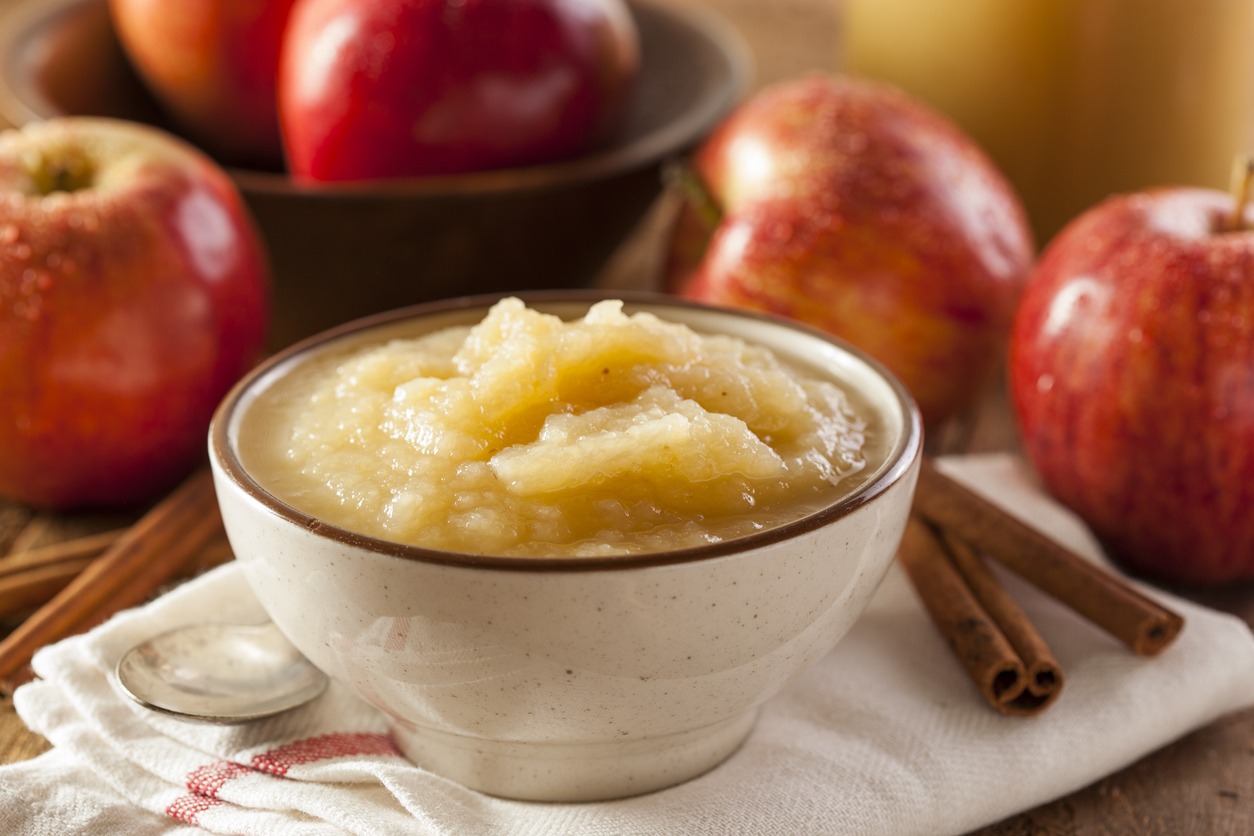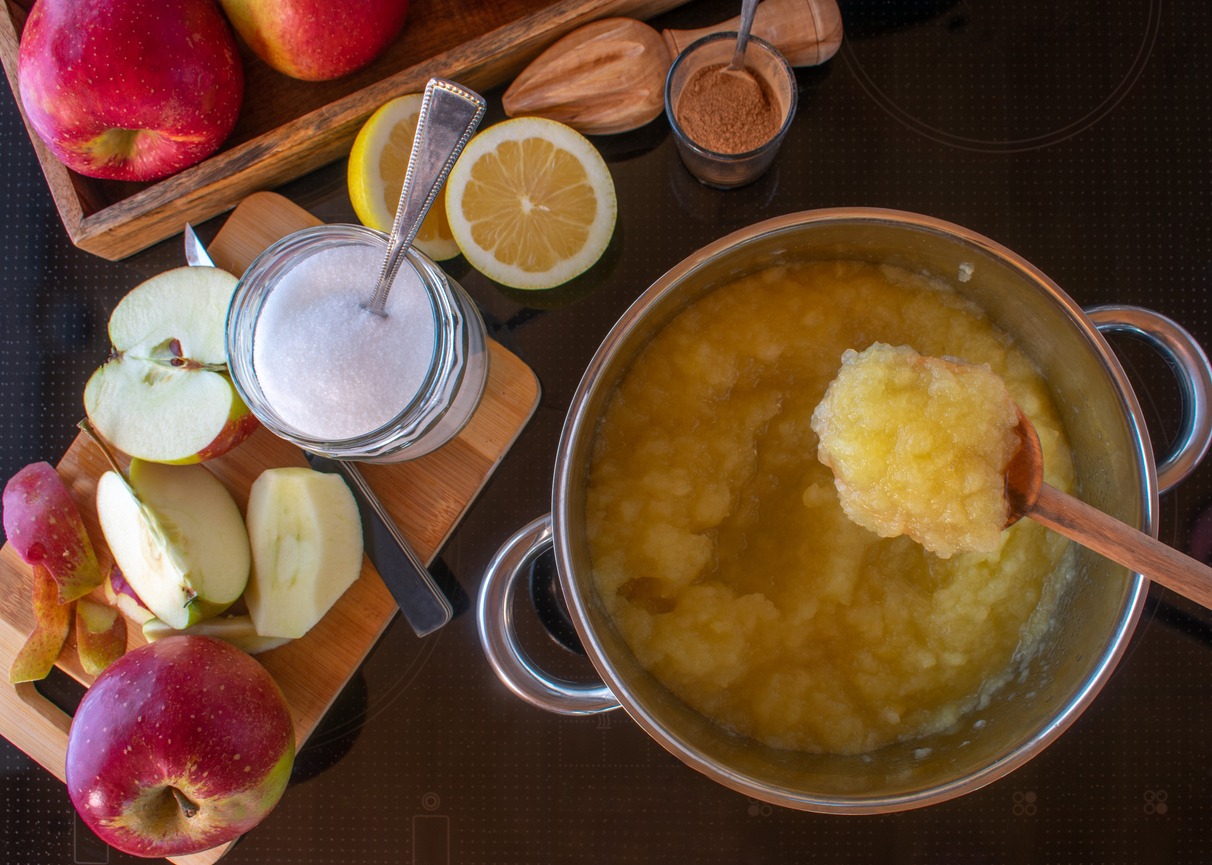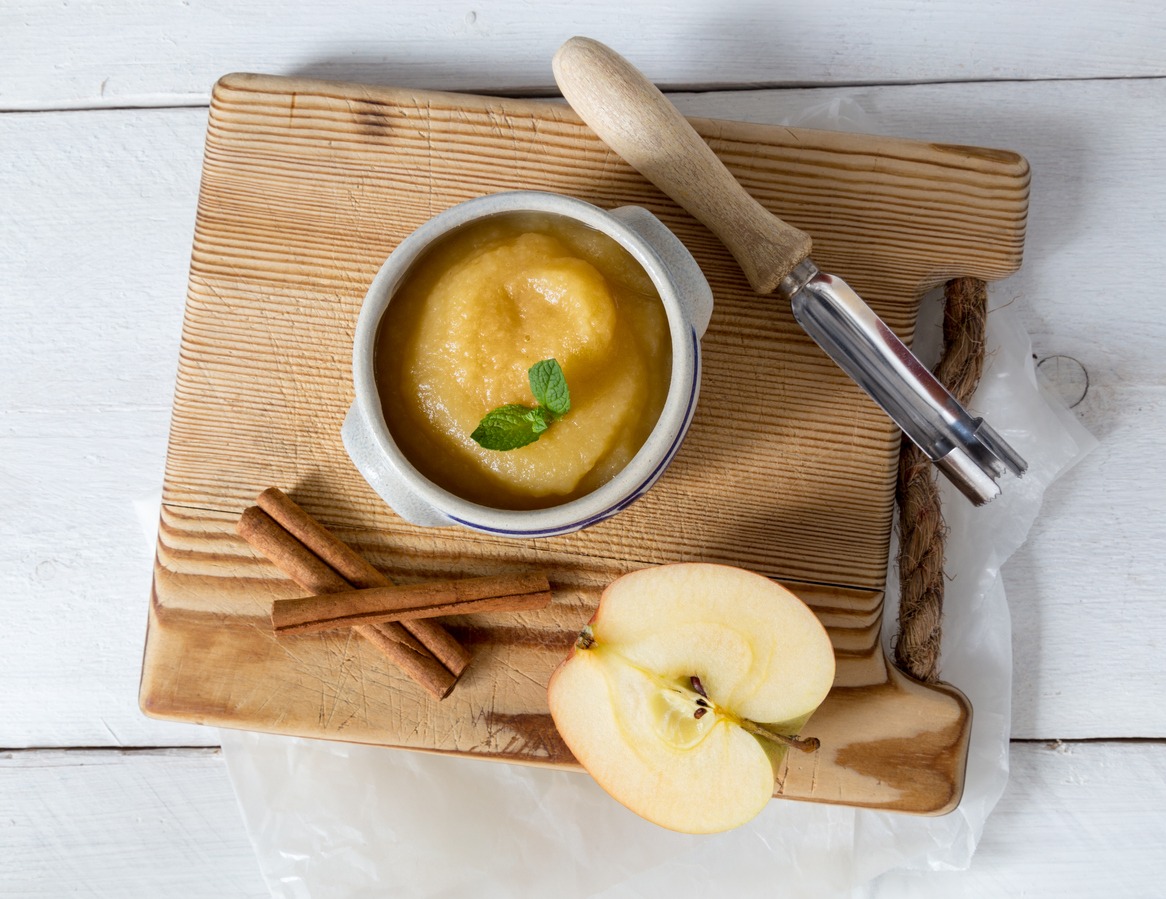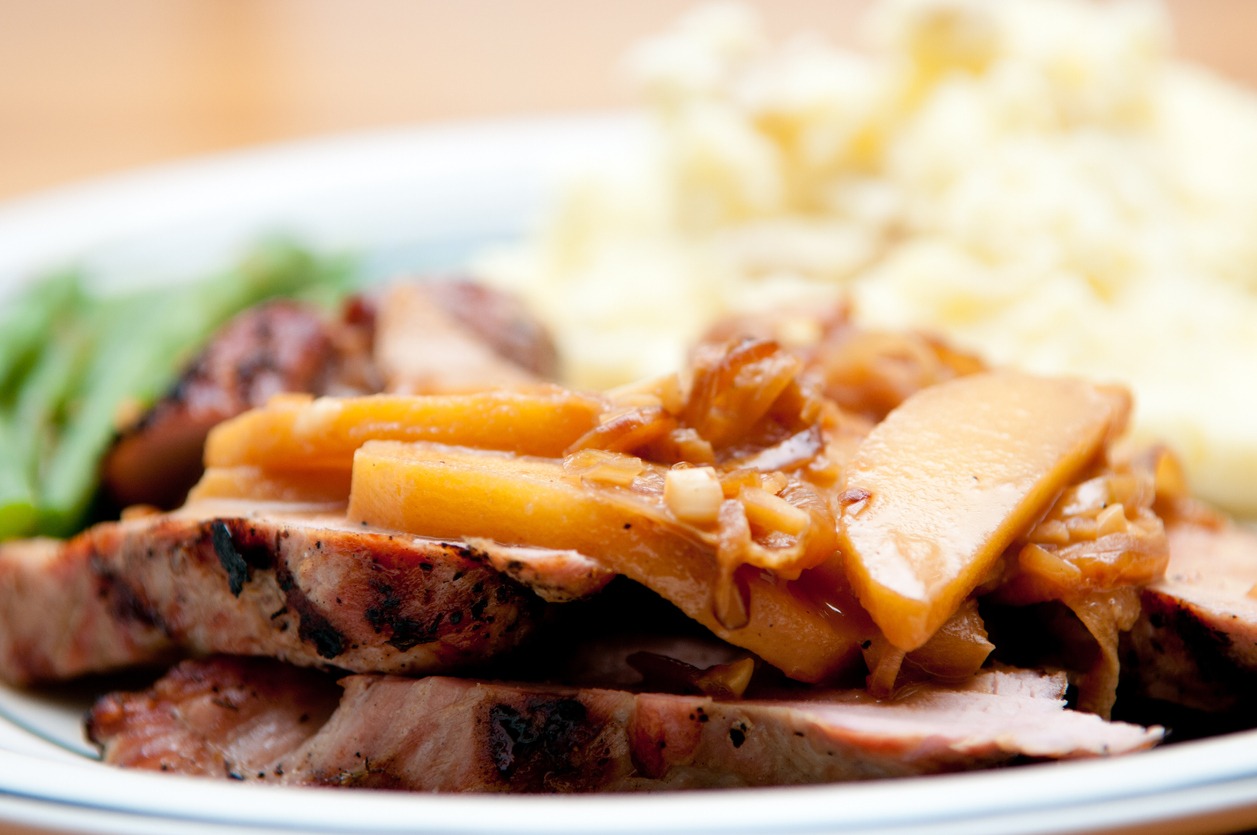When scouring for applesauce at the store, you may get turned off by the added sweeteners, flavorings, and preservatives. Perhaps you’re wondering if it’s better to make one on your own. This is your sign: Nothing beats the taste of homemade applesauce, and it’s not hard to make!
Beyond being a delight to the taste, homemade applesauce boasts many health benefits. Packed with vitamins, fiber, and natural antioxidants, this delightful concoction is a guilt-free indulgence that nourishes both body and soul. By making your own, you can control the ingredients, ensuring a wholesome treat free from additives and preservatives.
If you’re wondering how to make your own, check out this recipe that makes yummy homemade applesauce:
Homemade Applesauce Recipe
Apples vary in sweetness level, depending on their variety, ripeness, and how late in the season they are picked. The amount of sugar you want to add will depend on how sweet your apples are and how sweet you prefer your applesauce. You can leave the sugar out altogether if you are already using sweet apples.
Regarding the types of apples, the best varieties to use are McIntosh, Granny Smith, Golden Delicious, Fuji, and Jonathan apples.
To prepare the apples, use a paring knife or a sharp peeler and remove the outer peel. Cut the apples into quarters, and use a paring knife to cut out the tough core parts. Alternatively, you may want to use an apple peeler corer.
Preparation time: 15 minutes
Cooking time: 40 minutes
Total time: 55 minutes
Servings: 12 to 16 servings
Yield: 1 1/2 to 2 quarts
Ingredients:
- 4 pounds (about 8 to 10 apples, depending on the size) apples
- 2 strips of lemon peel (zest only, no pith), using a vegetable peeler
- 3 tablespoons lemon juice or apple cider vinegar (adjust to taste)
- 1/2 teaspoon ground cinnamon
- Up to 1/2 cup white sugar (can substitute half with brown sugar)
- 1 cup water
- 1/2 teaspoon salt
Instructions:
1. Prep the apples.
Peel, core, and slice the apples into small chunks, then transfer them to a large saucepan or pot.
Boil the apples with the sugar and seasonings.
Add the lemon peel strips, lemon juice (or vinegar), cinnamon, sugar, water, and salt in the same pot. You can start with half the sugar and adjust to taste later. Bring to a boil over high heat, then reduce the heat to low.
2. Simmer.
Cover the pot and maintain a low simmer for 15 to 20 minutes until the apples are completely tender and cooked through.
3. Remove the lemon peels, then mash the apples.
Remove the pot from the heat and discard the lemon peels. Use a potato masher to mash the cooked apples in the pot to create chunky applesauce. For a smoother texture, use a food mill, immersion blender, or standing blender to puree the cooked apples. If using a standing blender, blend in small batches and avoid overfilling. If you don’t have these things, a fork will be fine for mashing, although expect it to be chunky.
4. Adjust the seasoning and consistency as needed.
If the applesauce is too thick, add more water to thin it out. For more sweetness, add more sugar, and for more tang, add more lemon juice.
5. Enjoy!
The applesauce can be enjoyed hot or chilled. It pairs well with savory dishes like pork chops, makes a delightful snack or light lunch when served with cottage cheese, and complements vanilla ice cream or yogurt. If to be consumed immediately, it will keep in the refrigerator for 1 to 2 weeks when stored in an airtight container.
Notes:
This applesauce recipe is suitable for canning. If using a water-bath canner, process pint jars for 15 minutes and quarts for 20 minutes at sea level. Adjust boiling time if you live at a higher elevation.
This homemade recipe can be frozen and stored for up to 2 months. Leave enough headroom in the jar or freezer bags for expansion if freezing. Allow it to cool completely before freezing.
Applesauce Making Tips
The recipe is just a guide – here are some other things you can do when making your own applesauce:
Mix different types of apples
A delightful applesauce often comes from a blend of apple varieties rather than relying solely on one type. McIntosh, Golden Delicious, Granny Smith, Fuji, and Jonathan apples are excellent choices for this mixture.
Add some twist by adding other fruits
Experimenting with flavors is part of the fun when making your own applesauce. Consider incorporating different fruits into the mix! For a delightful twist, toss in fresh cranberries to create cranberry applesauce, or add stalks of rhubarb for a rhubarb-infused variation. Sometimes, plums and pluots find their way into the applesauce, lending their unique essence to the blend.
Personalize your creation
- Instead of sugar, feel free to sweeten your applesauce with honey, stevia, Splenda, or any other sweetener of your preference.
- Spice things up by incorporating different spices or even a medley of flavors like apple pie spice, five spice, or pumpkin spice.
- Add cinnamon red hots while the apples cook for a zesty and vibrant red applesauce.
- For a more flavorful, dessert-tasting applesauce, stir in some butter, vanilla extract, and ground cinnamon until the butter is melted.
- If you prefer a sugar-free version, simply omit the sugar. However, remember to reduce the amount of lemon juice or apple cider vinegar or omit them as well.
Save time with a food mill
If you happen to own a food mill, you can skip the peeling and coring steps. Just quarter the whole apples and proceed with Step 1 as directed. After cooking, pass the apples through the food mill. If the resulting applesauce is too thin, return it to the pot and cook it a bit longer, stirring occasionally, until it reaches your desired consistency. Cooking the apples with the peels and cores adds extra pectin, resulting in an incredibly smooth sauce while saving you time.
Use a slow cooker if you want
Applesauce can be created in a slow cooker or Instant Pot as well. Instead of using a saucepan on the stovetop, place the apples (along with water, lemon juice, and a cinnamon stick) in either a slow cooker or Instant Pot. Cook on high for 3 to 4 hours in the slow cooker, or apply 10 minutes of high pressure in the Instant Pot.
Transform it into apple butter
Did you know that applesauce serves as the foundation for apple butter? Once you’ve mastered this recipe, you’re already on your way to creating the delightful richness of apple butter. Simply take your smooth applesauce and proceed with our amazing apple butter recipe, which concentrates the flavors and adds a touch more sweetness to the mix.
Ways to Use and Consume Applesauce
You probably created an applesauce for a recipe, then you may have created a surplus, and you don’t know what to do with what’s left. Applesauce is often left on the fridge for so long, only to be remembered during Thanksgiving. But that shouldn’t be the case. Here are some delicious ways to use your homemade applesauce:
- Baking: Use applesauce as a substitute for oil or butter in baked goods like cakes, muffins, and bread. It will save you some saturated fat and calories while keeping your baked goods moist and delicious. Replace it for half of the butter in the recipe.
- Pancakes and waffles: Replace some of the liquid in your pancake or waffle batter with applesauce to add a hint of sweetness and moisture. It also works well as an egg substitute in vegan recipes. You can also add it as a topping instead of syrup.
- Smoothies: Add a dollop of applesauce to your favorite smoothie for extra flavor and natural sweetness. It pairs well with ingredients like bananas, cinnamon, and nut butter.
- Oatmeal or yogurt topping: Swirl some applesauce into your morning bowl of oatmeal or mix it with yogurt for a delicious and healthy topping.
- Baby food: Applesauce is a popular homemade baby food option. It’s easy to digest, naturally sweet, and provides essential nutrients for little ones.
- Sauces and dressings: Use applesauce as a base for homemade barbecue sauce or a fruity salad dressing. It adds a touch of sweetness and a unique flavor profile.
- Snack dips: Serve applesauce as a dip for sliced fruits, such as apples, pears, or strawberries. It’s a healthier alternative to sugary dips and adds a burst of flavor.
- Dessert parfaits: Layer applesauce with granola, yogurt, or whipped cream in a parfait glass for a delightful and quick dessert.
- Fruit leather: Spread a thin layer of applesauce onto a baking sheet lined with parchment paper and bake at a low temperature until it becomes a pliable, fruit leather-like texture. Cut it into strips for a homemade snack.
- Freezer pops: Pour applesauce into popsicle molds and freeze for a refreshing and healthy treat. You can even add chunks of fresh fruit or a sprinkle of cinnamon for added flavor.
- PB&A: Swap the jelly in your peanut butter sandwich for applesauce. Sprinkle with some cinnamon for more flavor.
- Paired with meats: Applesauce isn’t only for snacks or desserts – you can mix it with light sour cream and nutmeg for serving alongside pork or chicken dishes.
- Snack on its own: Eat it plain as a snack, or heat it up on the stove and add cinnamon.




